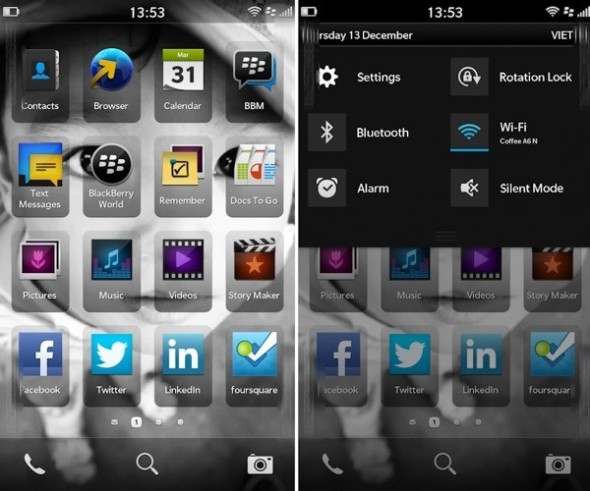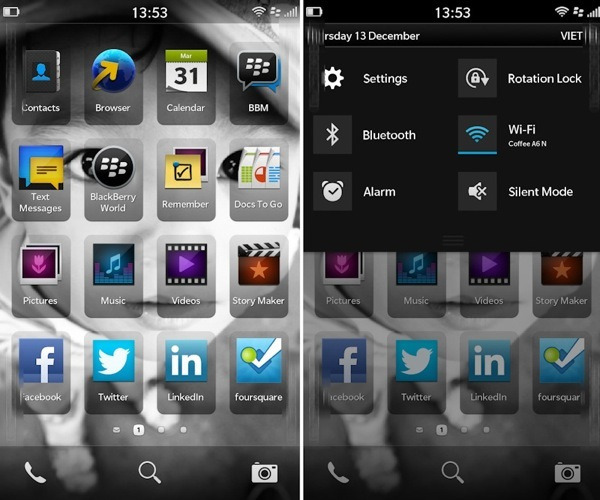
BlackBerry 10 is the new mobile operating system (OS) from RIM and marks a bold development for the Canadian smartphone manufacturer in its bid to combat the decline in market shares it has seen in recent months.
There was a time when RIM reigned supreme with its signature QWERTY devices, but the smartphone world has come on leaps and bounds over the past few years and the likes of Android, iOS and Windows Phone have become the main contenders in the world of mobile operating systems.
Despite suffering delays in its development last year the BB10 software is finally ready to launch at the end of January. RIM has made some huge changes with BB10, set to rival competitors’ platforms with a host of innovative features.
The rumoured BB10 launch device is thought to feature a full touchscreen, and while the Canadian company has tried this before with the Torch range without much success, it looks as though RIM might persist with touchscreen devices for BB10. It’s currently unclear whether these devices will be 4G-enabled or whether they’ll be solely available on ‘traditional’ 3G networks from the likes of Orange and Vodafone. Either way the raft of new features promised makes BB10 an exciting proposition.
So, what are the key features set to come with the much-anticipated OS, which will hopefully push BlackBerry back to the top of the smartphone pile?
Keypad
BB10 has seen the physical keys synonymous with BlackBerry ditched in favour of an intuitive onscreen keypad which adapts to each individual user.
The OS boasts enhanced predictive texting which monitors messages and social networks, learning which words you most commonly use and presenting them to you as you type out messages or emails. Oft-used words are displayed above the letter which they begin with and these can be ‘flicked’ up on to the screen where you’re composing your message.
BB10 has taken this even further by remembering the way a user taps each key and as such, adapts the keypad’s responsiveness, something which could prove to be really useful to users of all texting abilities.
BB Hub
Similar to the People Hub found on Windows Phone, the BlackBerry Hub brings each user’s contacts together into one easy-to-access place, pulling in contact information and all the interactions that have been shared (including tweets and Facebook messages). This creates a seamless link between all your accounts and those you communicate with so you can keep track of your conversations.
Notifications
While this may seem like a simple function, it has been hugely improved in BB10, which now lists all your notifications in one sliding menu. Known as ‘BlackBerry Peek’, this feature lets the user know where each notification has come from and what it relates to, so updates can be checked without having to leave the app that’s currently open.
This feeling of ‘Flow’, as RIM calls it, enhances multi-tasking and ensures navigation across the platform is smooth and seamless, as though everything you are working on is spread out in front of you.
Extending this even further is the revelation that the new BlackBerry OS doesn’t have a homescreen as such and instead works on this system of multi-tasking. This means that each part of the phone’s functionality flows over the other as they are being used. It gives the user the feeling that everything is going on all the time, and can be accessed instantly with just a quick swipe.
It’s a really unique feature and is unlike anything we’ve ever seen on a smartphone before, either from BlackBerry or any other manufacturer for that matter. While it may take a while to get used to we think it could really appeal to business users who have often opted for BlackBerrys in the past.
Time Shift
This function is incorporated in to the BB10 camera app and is a revelation in image capturing. If the user has taken a picture and finds one of the subjects has their eyes closed at the moment the shutter button is pressed, Time Shift lets them highlight their face and shift the image back a few frames until they are open. The app then seamlessly merges the altered part of the picture with the rest of the image, with no distortion around the edges.
These are just a handful of impressive aspects of RIM’s new mobile platform but with the handsets that will run BB10 yet to be confirmed, it’s difficult to judge how well the software will really work. The first BB10 device is rumoured to be the BlackBerry Z10 but this will not be unveiled until 30th January when RIM’s official launch takes place. So, it seems we’ll just have to wait and see if the new OS really has what it takes to stand out from the crowd.

